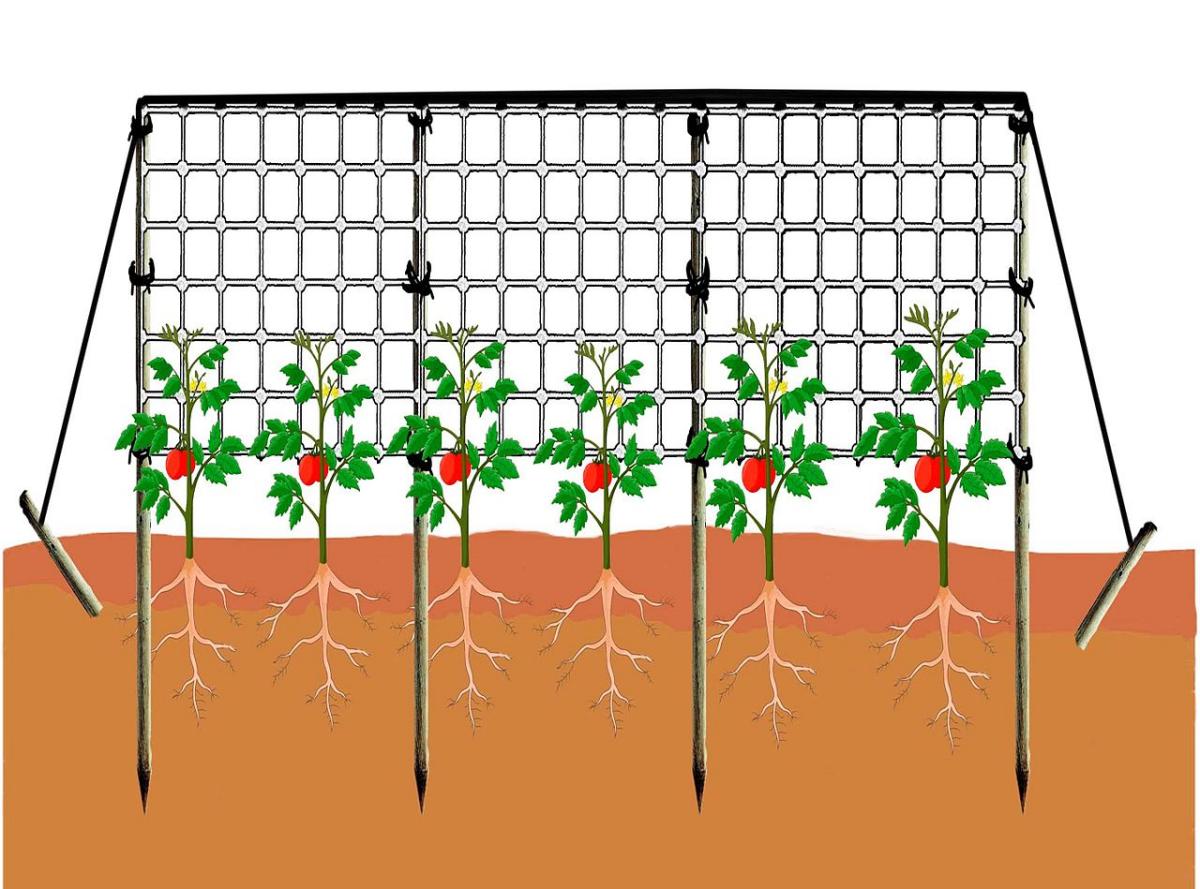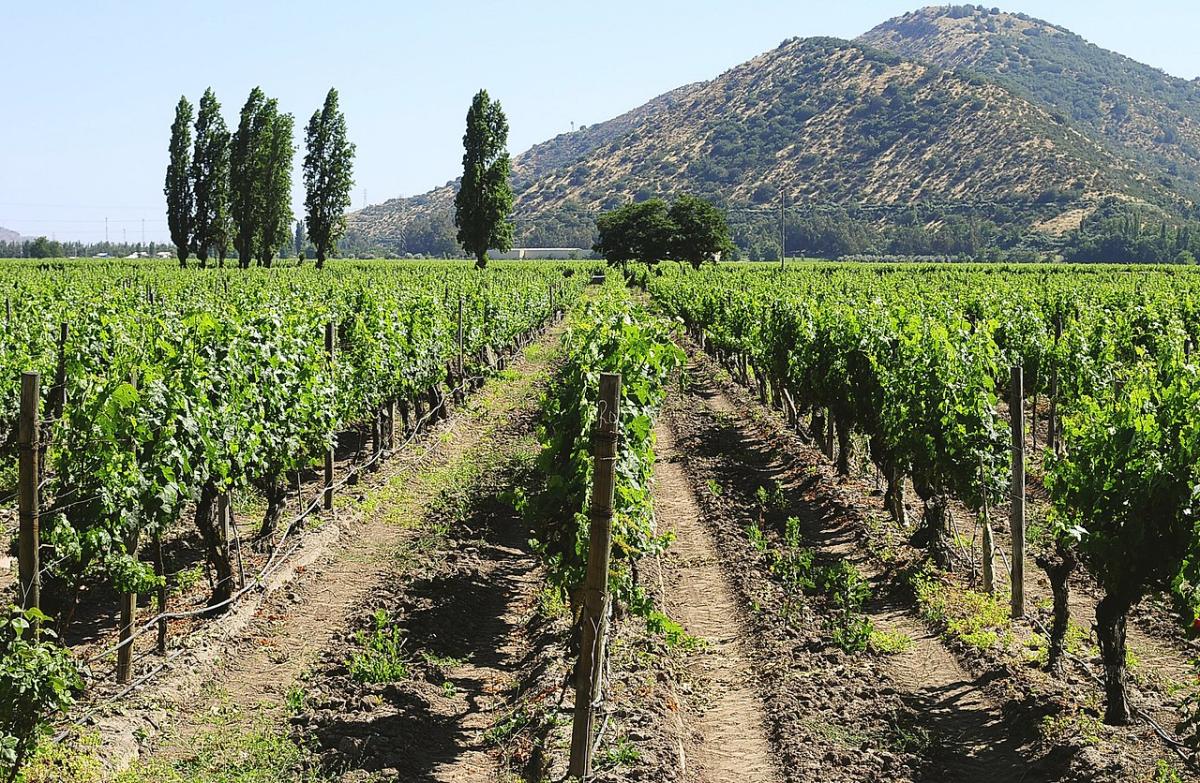
Image - Wikimedia / SaturninoOpi
One way to make better use of the available space is by trellising. This is a method that has multiple advantages, including a lower risk of fungal infections, and easier plant maintenance.
But is it suitable for any type of crops or only for a few? If you want to know more about trellising, then I will tell you everything you need on this interesting topic.
History of trellis cultivation
Trellising plants has been around for a long time. Already in the Europe of the Middle Ages it was customary to grow mainly trees to decorate the walls. Although it is believed that it is a technique that could be even older: from Ancient Egypt. Even so, if we want to see how it was perfected, I can't think of a better place than to visit any French formal garden, in which geometric shapes, order and control over plants are key protagonists.
The use of space is a characteristic that stands out when it is grown on a trellis. And that is something that traditional gardeners know very well: planting in rows and cultivating them in two dimensions, pruning them so that the branches grow only to two sides, their maintenance is easier. In addition, the labor and time that must be dedicated to each of the plants is reduced, since they are not so vulnerable to pests and diseases.
What are its advantages?

Image - Wikimedia / Gervacio Rosales
Although I have already mentioned a few, it is time to talk carefully about its advantages:
- A greater number of plants are grown in the same space: When grown in two dimensions, they take up less space, so it is possible to plant more.
- Better circulates the air between leaves / branches: this is very important, because thanks to it the risk of infections is reduced. And you have to think that microorganisms, such as fungi, proliferate in areas with little ventilation, so if a plant is sufficiently ventilated, it is not as vulnerable as would be expected.
- The plant grows more vigorously: This is due to the fact that as all its parts are exposed to the sun's rays, the leaves can carry out photosynthesis at the same speed, thus producing starches and sugars that are then used for their growth.
- The fruits have a good development: by being exposed to the Sun, it is possible to consume fruits of a better quality.
- Pruning is facilitated: once the plants are formed, all you have to do is prune them to maintain them.
- Pests, diseases and / or other problems are identified faster: thanks to pruning, having the plants in two dimensions makes it easier to identify possible problems.
- It is usually not necessary to replace the trellis mesh: they are made of materials that are highly resistant to climatic factors, so you only have to buy them once.
Types of trellis
There are different ways of growing on a trellis, which are:
Cord
A lot is done when vine growing, for example in espalier. It consists of pruning the plant leaving it a main trunk, and orienting two branches horizontally. In this way, both the production and the harvest are very interesting.
Horizontal
It is one in which branches grow horizontally. It is not complicated, since all you have to do is ensure that the plants have branches whose development is straight, to one side.
Cane
To grow in palmettes you must prune the plants so that their branches fan out, as palm trees do for example.
Of this type there are different varieties, among which the following are distinguished:
- Simple: branches sprout horizontally from a trunk.
- Double: it is a trunk from which two vertical branches spring together, and from which other horizontal ones sprout.
- Diablo: two main branches sprout from a trunk, and from them other secondary ones.
- Glass blower: a minimum of four branches sprout from the trunk forming a U.
What plants can be grown on a trellis?

Image - Wikimedia / LBM1948
Not all are appropriate; in fact, only woody varieties that tolerate pruning are recommended, and if possible they are dwarf varieties (although this is not essential if the above is true). For example, fruit trees of the genus Prunus (peach, cherry, apricot, etc.) are not advisable, since when they are pruned they lose a lot of sap.
On the other hand, you can grow: almost any ornamental shrub (Pyracantha, Cotoneaster, Photinia, Hydrangea, rose bushes, ...); or even fruit trees and orchards (vine, almond, tomato, peppers, pistachios, ...).
As you can see, there are many plants that can be grown on a trellis.
Where to buy trellis mesh?
If you dare to grow on a trellis, here is a selection of meshes so that you can choose the one that interests you the most:
- STRONG SUPPORT FOR GROWING PLANTS: Stretch mesh provides a sturdy support structure that effortlessly supports the weight of your precious stems, leaves, buds, fruits and flowers.
- Stretch Mesh: It is made of stretchy material. Durable mesh provides adjustable elastic support.
- The product is suitable for growing plants in tents. Long service life and very durable. Easy to use, professional and very practical.
- Garden netting Size: 1.8mx 2.7m, mesh: 10 x 10cm, 20 flexible plant cable ties.
- Made of high quality PE material, which is durable, practical, soft, weather resistant.
- Four fixed corners easy to install, you can hang it on the shelf, wall, tree, etc.
- Impact protection equipment
- For sports practices
- It has distinctive details of the brand
- The Conich Trellis Net is made from durable nylon polyester filament and comes rolled for easy storage and can be cut to size with scissors as needed.
- The 1,5m x 107m garden twine has 15cm x 15cm holes which are ideal for plants to easily weave in and around as needed, perfect for growing beans, peas, cucumbers, tomatoes, berries, fruits, vegetables, vines and much more.
- The weather-resistant landscape strap will reduce pressure during plant growth and can be used indoors or outdoors for vertical or horizontal growing plants.
What did you think of this topic?




